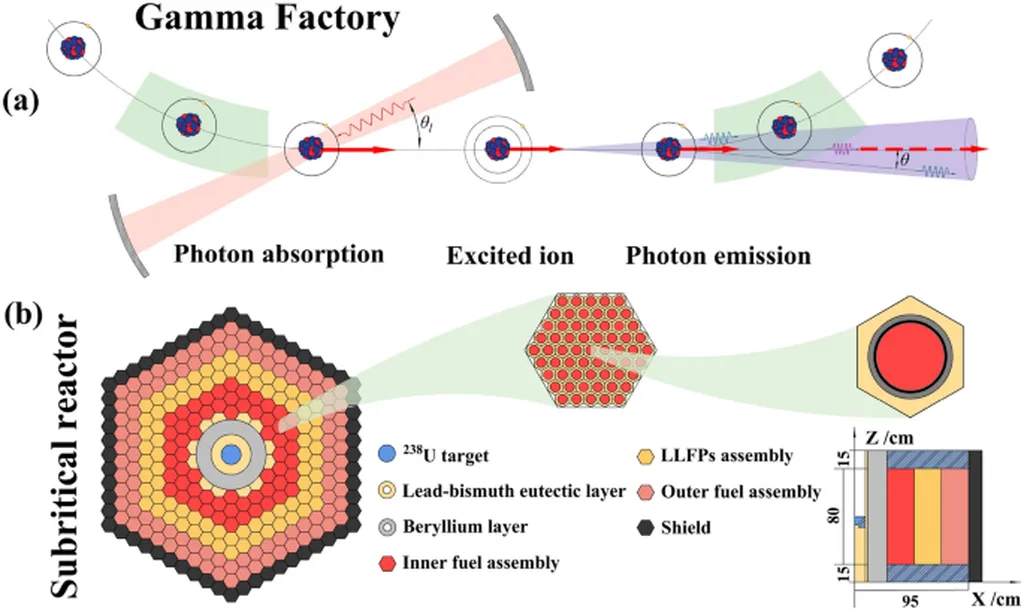Researchers from the Institute of Modern Physics at the Chinese Academy of Sciences, along with collaborators from other institutions, have proposed a novel approach to nuclear waste transmutation and power generation using a concept called the Gamma Factory (GF). This project aims to create high-intensity, tunable gamma-ray beams that could drive an advanced nuclear energy system (ANES).
The Gamma Factory project, led by Hu Baolong and his team, including Mieczyslaw Witold Krasny, Wieslaw Placzek, Yun Yuan, Xiaoming Shi, Kaijun Luo, and Wen Luo, envisions a system where intense gamma-ray beams are used to produce neutrons. These neutrons can then be harnessed to transmute long-lived fission products (LLFPs) from nuclear waste into shorter-lived or stable isotopes, reducing the environmental impact of nuclear waste. Additionally, the system could generate significant thermal power, which can be converted into electricity.
The researchers investigated the feasibility of using the GF beam to drive an ANES. They found that with a gamma-ray beam intensity of around 10^19 photons per second, the ANES could produce over 500 megawatts of thermal power. Over a 20-year operational period, this system could transmute up to 30% of five typical LLFPs: selenium-79, technetium-99, palladium-107, iodine-129, and cesium-137.
The study also compared the GF beam with a 500 MeV proton beam, a more conventional method for neutron production. While the GF beam has a lower neutron production efficiency per megawatt of beam power, the overall net power production efficiency of the GF-based ANES could be comparable to that of a proton beam-driven system. Moreover, the GF-based ANES offers additional transmutation capacity not available in proton beam-driven schemes.
One of the key advantages of the GF-based ANES is its potential to transmute LLFPs without the need for isotopic separation, a process that can be complex and energy-intensive. This could make the system more efficient and cost-effective for nuclear waste management.
The research was published in the journal Scientific Reports, part of the Nature Research group. While the concept is still theoretical and would require significant technological development, it offers a promising avenue for addressing two critical challenges in the energy sector: nuclear waste management and power generation. If successfully implemented, this technology could enhance the sustainability of nuclear energy by reducing the long-term radiotoxicity of nuclear waste and providing a reliable source of power.
In practical terms, the energy industry could benefit from this research by exploring the potential of gamma-ray beams for nuclear waste transmutation and power generation. This could lead to the development of advanced nuclear reactors that are safer, more efficient, and more environmentally friendly. Additionally, the technology could be integrated into existing nuclear power plants to improve their waste management capabilities and overall performance.
This article is based on research available at arXiv.

